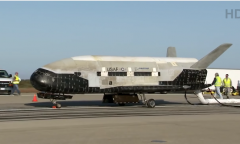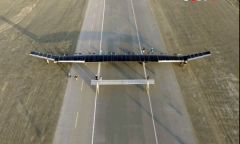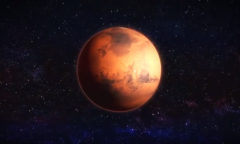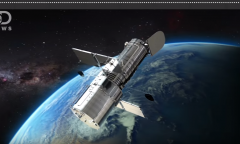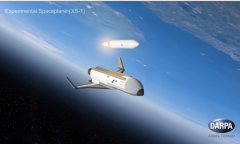By Prei Dy, | June 14, 2017

Russia plans to draw a map of the universe on its Spektr-RG space mission. (YouTube)
Russia is planning to draw a map of the universe including at least three million black holes on its Spektr-RG (Spectrum Roentgen Gamma) space mission, which is slated to launch on the Baikonur Cosmodrome in 2018.
"The aim of this observatory is very simple: to create a detailed map of the entire universe with millions of sources," project astrophysicist Rashid Sunyaev said during an award ceremony at Kremlin.
Like Us on Facebook
"One of the goals is that we will see at least three million supermassive black holes in the sky. We will put them on the map and people will know where the black holes are."
The space observatory is expected to be launched next year boarding the Proton-M rocket. It will take the rocket at least 100 days to deliver the satellite to its position at the second Lagrange point, which is about 1.5 million kilometers away from the Earth.
The observatory features two X-ray mirror telescopes, namely, the eROSITA, which detect X-rays in the energy range of 0.2 to 12.0 keV, and ART-XC with 6 to 30 keV.
The Spektr-RG, which is a joint project between Roscosmos and the German Aerospace Center, will conduct the imaging all-sky survey in the medium energy X-ray range of up to 10 keV with an unprecedented spectral and angular resolution, according to Sputnik News.
The Spektr-RG aims to spot gamma rays and X-rays to map between 50 and 100 thousand galaxy clusters and up to three million distant galactic nuclei. It will conduct an in-depth study of the physics of galactic X-ray sources such as pre-main sequence stars, supernova remnants, and X-ray binaries.
Meanwhile, a group of astronomers has successfully captured the image of the Sagittarius A* black hole by training eight telescopes from three continents including the Spanish Sierra Nevada's 30-meter IRAM telescope, Antarctica's South Pole Telescope, Hawaii's James Clerk Maxwell Telescope, and Chile's Atacama Cosmology Telescope. Each telescope was trained to focus on a different section of the black hole. Then, the data were collated and a photo of a black hole was assembled.
-
Use of Coronavirus Pandemic Drones Raises Privacy Concerns: Drones Spread Fear, Local Officials Say

-
Coronavirus Hampers The Delivery Of Lockheed Martin F-35 Stealth Fighters For 2020

-
Instagram Speeds Up Plans to Add Account Memorialization Feature Due to COVID-19 Deaths

-
NASA: Perseverance Plans to Bring 'Mars Rock' to Earth in 2031

-
600 Dead And 3,000 In The Hospital as Iranians Believed Drinking High-Concentrations of Alcohol Can Cure The Coronavirus

-
600 Dead And 3,000 In The Hospital as Iranians Believed Drinking High-Concentrations of Alcohol Can Cure The Coronavirus

-
COVID-19: Doctors, Nurses Use Virtual Reality to Learn New Skills in Treating Coronavirus Patients



